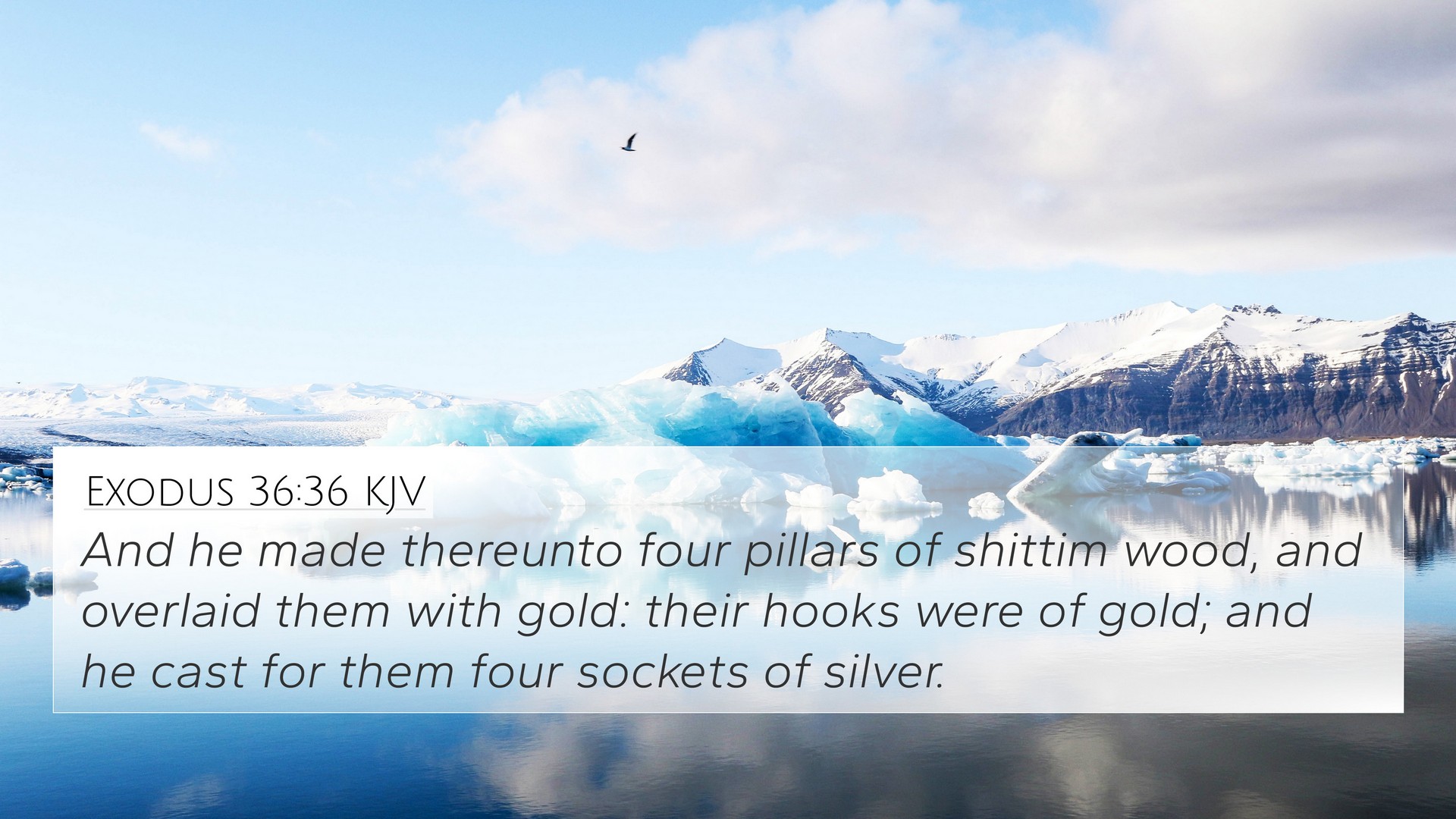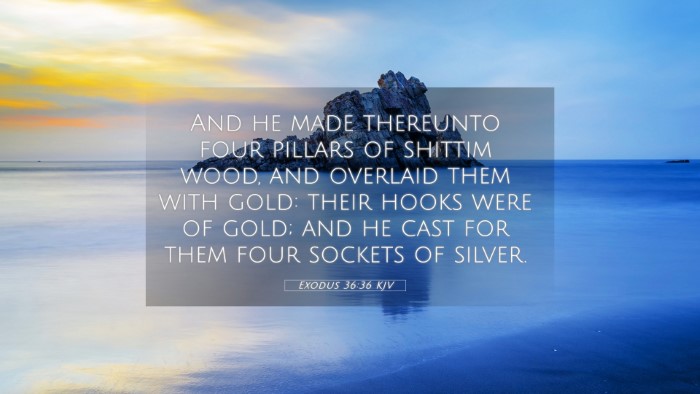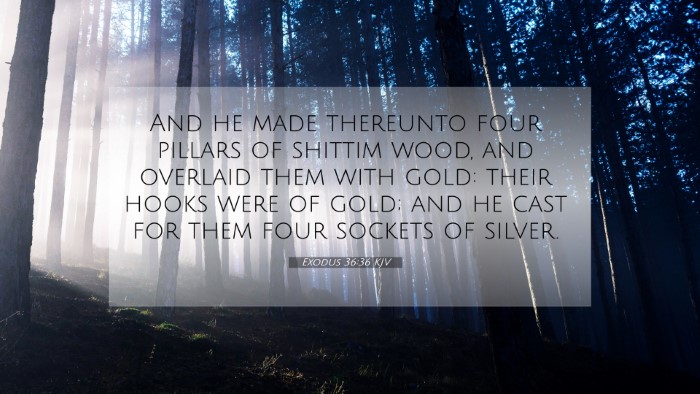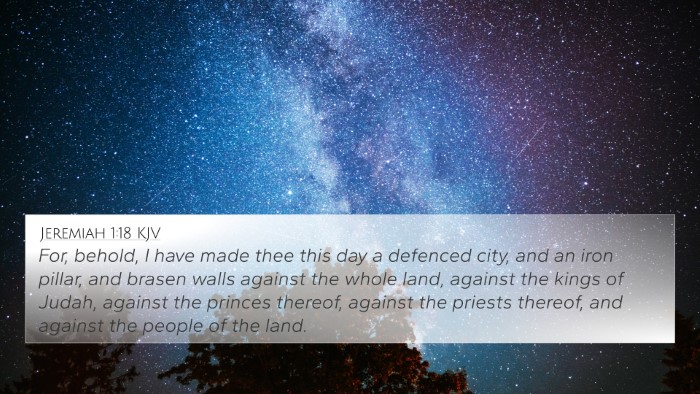Meaning and Interpretation of Exodus 36:36
Exodus 36:36 states: "And he made a veil of blue, and purple, and scarlet, and fine linen, with cherubim made he it of cunning work." This verse describes the creation of the veil for the Tabernacle, emphasizing both its material and intricate design. Below, we explore the interpretations and connections this verse holds within the broader context of scriptural themes, the significance of the veil in biblical worship, and its rich symbolism.
Significance of the Veil
The veil mentioned in Exodus 36:36 serves as a critical element within the Tabernacle, separating the Holy Place from the Most Holy Place (or Holy of Holies). In this context, the veil is not only a physical barrier but also a profound symbol of the separation between God and man due to sin.
Commentary Insights
- Matthew Henry: Commentary on this verse emphasizes the skill involved in the craftsmanship, highlighting that the intricacy of designs reflects the glory of God in worship and the seriousness with which one should approach Him.
- Albert Barnes: Notes that the materials used—blue, purple, scarlet, and fine linen—hold significantcolor symbolism representing royalty, richness, and the divine presence. The cherubim woven into the veil illustrate the notion of angelic guardianship over sacred spaces.
- Adam Clarke: Points out that the weaving of cherubim into the veil denotes that God is covered with majesty and that access to Him is both beautiful and exclusive, inviting us to comprehend the vastness of divine holiness.
Bible Verse Cross-References
Exodus 36:36 relates to various other Bible verses that illuminate its themes and significance. Here are some key cross-references:
- Exodus 26:31-33: Discusses the use of similar materials and the purpose of the veil in separating the holy spaces.
- Hebrews 9:2-3: References the Tabernacle and its divisions, elaborating on the significance of the veil in relation to access to God.
- Matthew 27:51: Depicts the tearing of the veil at Jesus' crucifixion, symbolizing the new access believers have to God through Christ.
- 2 Corinthians 3:14-16: Describes the veil as a symbol of spiritual blindness and relates it to the inability of some to understand the new covenant.
- Psalm 104:2: Speaks of God being clothed in light and majesty, reinforcing the concept of a divine presence that requires careful approach.
- Isaiah 6:2: Mentions cherubim in the context of God's throne, linking them to the divine glory surrounding God.
- Acts 7:44: References the Tabernacle in the wilderness, tying the historical significance of its design and implementation to the Israelite worship experience.
Thematic Bible Verse Connections
The veil and its description provide a framework for understanding themes of holiness, access to God, and the preparatory elements leading to New Testament revelations.
Connections to New Testament Teachings
The veil foreshadows the role of Jesus Christ as the mediator between God and man. The intricacy and beauty of the veil serve as an image of the divine truth revealed through Christ. The tearing of the veil signifies not only the end of the old covenant but the beginning of a new relationship made possible through His sacrifice.
- Hebrews 10:19-20: Encourages believers to enter the Most Holy Place by the blood of Jesus, reflecting the supreme access granted through His atonement.
- John 14:6: Jesus declared, "I am the way, the truth, and the life. No one comes to the Father except through me," affirming the importance of recognizing Christ's role in bridging the gap represented by the veil.
Conclusion
In studying Exodus 36:36, one uncovers a magnificently woven tapestry reflecting divine beauty, separation, and ultimate redemption. This verse not only shapes our understanding of the Tabernacle's design but also prompts reflective connections across both Old and New Testaments. Recognizing these intertwined themes enhances one's comprehension of God’s progressive revelation through scripture.
Tools for Bible Cross-Referencing
Studying Bible verses in relation to one another can be facilitated through various tools:
- Bible concordance: A useful resource for locating verses based on specific keywords.
- Bible cross-reference guide: Helps track thematic connections between scriptures.
- Cross-reference Bible study methods: Offers systematic approaches to examining interconnected verses.
Understanding the connections between Bible verses enriches one's spiritual journey and fosters a deeper appreciation for the unity of scripture.



